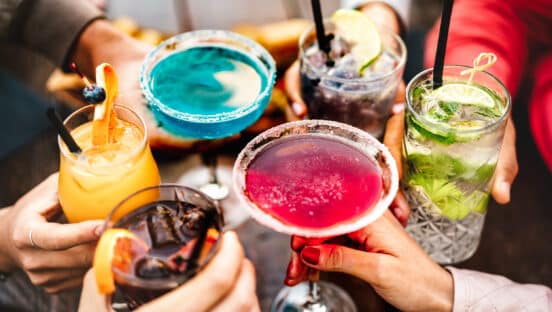Sponsored by Sustana Fiber.
There is no question that restaurants have to make environmental sustainability a priority, but how they do so changes often, based on consumer, corporate, and sometimes governmental demands.
“Businesses are taking on a bigger sustainability role than they did before,” says Renee Yardley, senior vice president of sales and marketing for Sustana Group. “In the past, they would wait for legislation, but companies now see the consequences of waiting to be compliant and how that puts them behind. By getting ahead of sustainability, they can help frame the conversation.”
Here are three of the biggest sustainability trends impacting the foodservice industry today and how restaurants can implement them.
1. Boost Transparency
Today’s diners don’t just vote with their dollars on issues they care about, they take to social media to talk about the brands that live up to their standards. As a result, many investors and corporate stakeholders see the necessity of ensuring brands are driving real change and being open about it with their communities.
“Companies are learning they have to be transparent with customers because they are asking for it,” Yardley says.
What transparency looks like in practice varies from brand to brand, but Yardley says Sustana Group, for example, published a sustainability strategy that outlines the company’s materiality impact and goals for the coming year. Restaurants can do the same
“Restaurants may also want to do an education program with customers,” Yardley says. “Another step is embedding sustainability leadership within the marketing and operations teams so that sustainability is taken into consideration for every major brand decision.”
2. Switch to Paper
Many brands are giving up styrofoam and other unsustainable packaging in favor of renewable, recycled, and recyclable materials. Today, paper is a strong contender for restaurants. Not only is paper lightweight and easy to use and store, but it’s also a natural resource with a longer life cycle than many other materials.
“Paper fiber can be recycled about seven times, so we can make maximum use of the fiber,” Yardley says. “It also degrades if it does get sent to a landfill and is one of the highest recovered materials on the market.”
3. Engage in the Circular Economy
Thinking about the life of products within the walls of the restaurant isn’t enough for a brand to be considered truly sustainable. Now, foodservice leadership must think about their brands’ place within the circular economy.
“The circular economy is about reducing waste by optimizing the use of resources,” Yardley says. “Recycling is just one part of the circular economy. It’s also thinking about how materials can be put back out into the consumer world again.”
One big priority for restaurants in the coming years is not just thinking about which packaging can be recycled, but which products can be reused, and which vendor partners can help them participate in the circular economy.
“It’s important to choose supply chain partners that use 100-percent post-consumer recycled fiber,” Yardley says. “At Sustana Fiber, we use recycled material from the start to create our EnviroLife Fiber, which is compliant with FDA standards for food-contact use and designed to be recyclable. We also help our customers see how they can bring that material back to the mill again for reuse so that all restaurants, big and small, can meet their sustainability goals and close that loop in the circular economy.”
To learn more about how to get ahead of sustainability trends and participate in the circular economy, visit the Sustana Fiber website.
By Peggy Carouthers













